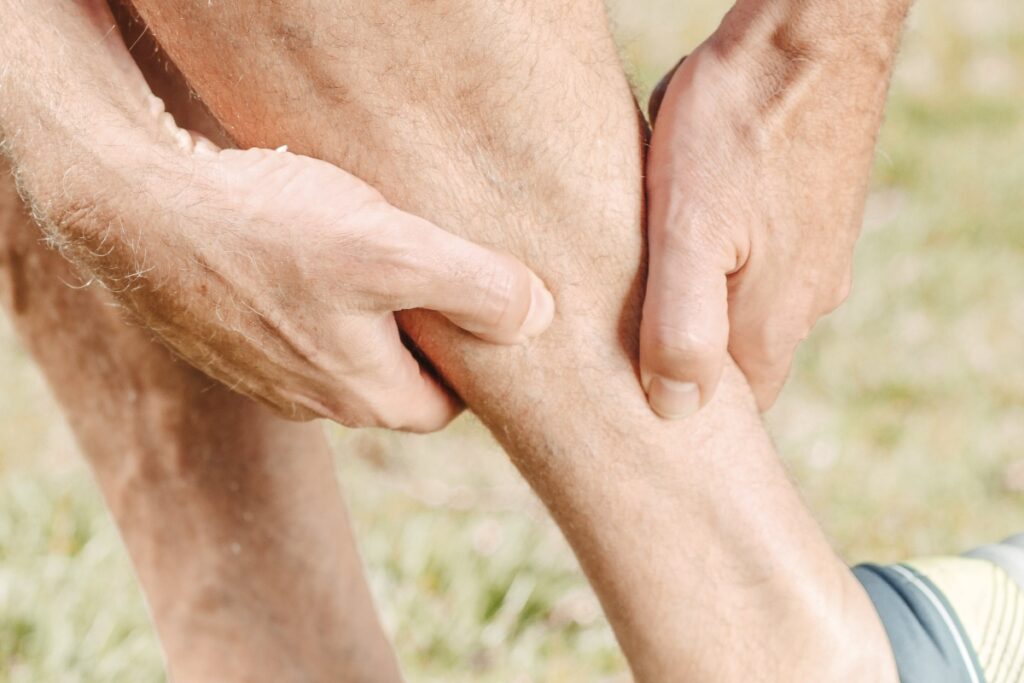How to Differentiate Between Muscle & Joint Pain

Muscle and joint pain can hold anyone back from everyday life, so it’s important to know what will help relieve this discomfort.
However, how do you know which pain is which? If you’re not sure if what you’re feeling is muscle pain or joint pain, how can you apply the ideal remedy?
Here’s how to differentiate between muscle and joint pain to lead you to the most effective relief.
What is Muscle Pain?

Muscle pain, scientifically known as “myalgia”, lets your body know that your muscles may have been overexerted, stressed or strained. Symptoms include localised soreness, serious aching and throbbing sensations which can be brought on for many reasons.
Causes of Muscle Pain
Overexertion: Pushing your muscles beyond their usual limits through intense exercise or physical labour can lead to microscopic damages to muscle fibres.
Poor Posture: Maintaining improper posture over extended periods, like sitting at desks or hunching over mobile phones, can strain certain muscles groups.
Stress: Emotional stress and tension often manifest physically causing muscles to tighten, especially around the neck, shoulders and back.
What is Joint Pain?

Joint pain, scientifically known as “arthralgia”, is targeted discomfort around your joints from general wear and tear to more serious conditions. Symptoms include stiffness, swelling or aching which can also be brought on for many reasons.
Causes of Joint Pain
Arthritis: This condition is a leading cause of joint pain. Arthritis comes in the form of osteoarthritis, rheumatoid arthritis and gout which all affect different age groups.
Past Injuries: Accidents or sports injuries like light sprains, fractures or dislocations can damage the structures surrounding the joints leading to pain and discomfort.
Inflammatory Conditions: Conditions like bursitis or tendinitis are inflammatory and cause the structures around the joint to be inflamed, therefore causing pain.
Differentiating Between Muscle & Joint Pain
Now we’ve covered the definition and cause of muscle and joint pain, let’s take a closer look at what the differences are and how you can successfully identify what pain you are experiencing.
When Pain Starts & How Long It Lasts
Muscle pain often starts immediately; however it tends to be more acute and can resolve relatively quickly with the right care. It is directly linked to the activity that caused it, so this will give you a clear idea of whether it’s muscle or joint pain.
Joint pain often has a more gradual onset and can persist for an extended period of time. Unfortunately, chronic joint conditions may result in persistent discomfort that lingers over time.
How Movement Affects the Pain
Partaking in activities that engage the affected muscle group may exacerbate muscle pain and cause discomfort instantly. However, joint pain is often accentuated during both movement and periods of rest. So, the discomfort can be present even when the joint is not actively engaged.
The Sound & Sensation of Pain
Muscle pain is less likely to be associated with any sounds, but you might feel a dull ache of tightness that is amplified when actively engaged.
Joint pain is more likely to be associated with sounds, such as cracking or popping during movement. These sounds also correlate with the sensation you may feel due to changes in joint structures.
The Pattern of Inflammation
Inflammation with muscle pain is usually localised to the affected muscle group, however swelling is generally minimal and the direct area may feel tender to the touch.
In contrast, joint pain involves more noticeable swelling and warmth around the joint. Also, with inflammatory conditions, like the ones mentioned above, the entire joint is affected leading to a broader area of discomfort.
Response to Rest & Recovery
Adequate rest and targeted stretching or massaging allows muscles to repair and recover, contributing significantly to muscle pain relief. While rest is essential for managing joint pain, complete immobility may not be the best approach. Gentle movement and targeted exercises can promote joint health and prevent stiffness.

Effective Muscle & Joint Pain Relief from Pernaton
Hopefully this guide has helped you differentiate between muscle and joint pain, so you can choose the right pain relief next time you need it. You can find some more helpful information here.
Pernaton products are renowned for helping both muscle and joint pain. Our Pernaton Gel has been designed to improve joint health for those suffering with joint wear and tear. Its long-lasting relief enables you to keep moving and provides a solution you can always rely on.
Our Pernaton Gel Forte has been designed to improve muscle health for those with more active lifestyles. The cayenne pepper extract enables a warming sensation which increases skin circulation and therefore, regenerates muscles.
Shop Pernaton today from our website, Amazon, Holland & Barrett, Superdrug Marketplace or selected pharmacies. If you have any questions, please don’t hesitate to get in touch with us at pernaton@ry.tm.
Related Posts


